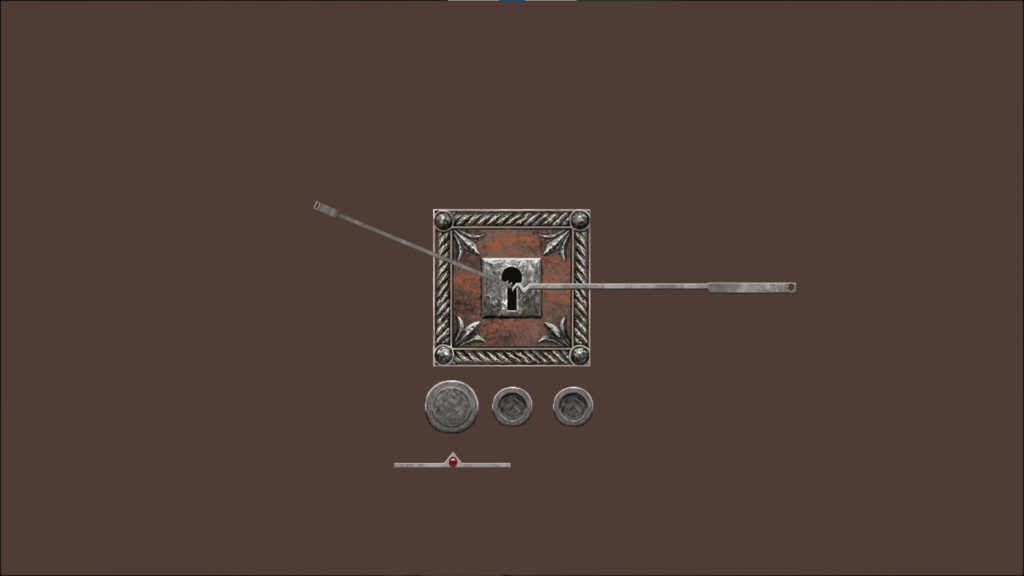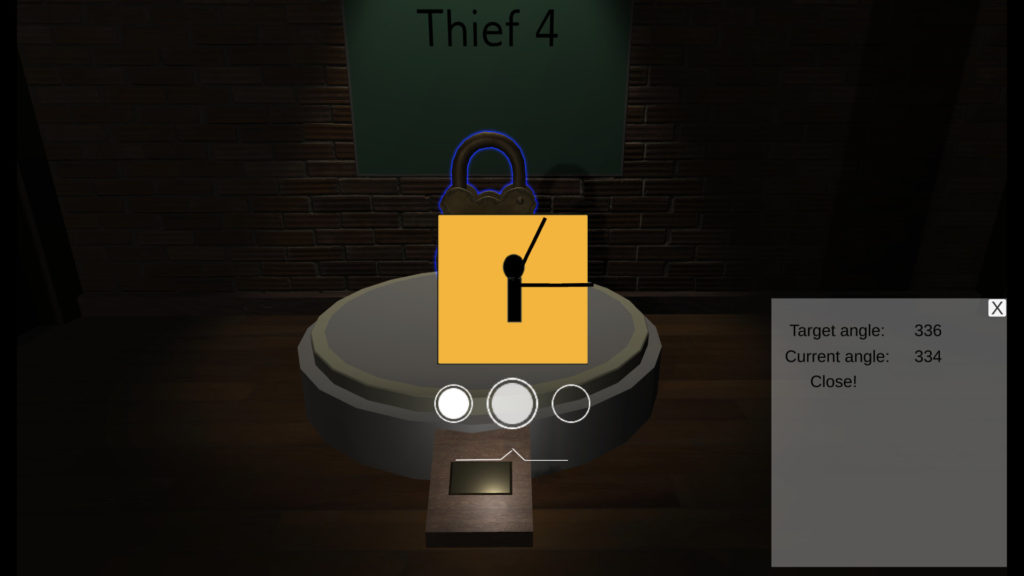As a designer when working on a game you regularly have to translate verbs and actions into mechanics. The script or macro would say: After having eluded the security guards, the player is going to hack a computer terminal. Or: In combat, when the gun is jammed, the player first has to repair it before being able to use it again. Or: After gathering all the parts, the player is now going to assemble an ancient machine and put it in motion.
Sometimes it is just about creating something that is a little more elaborated than pushing a button to perform a certain action.
As the real processes of doing those things are typically way too tedious and complex to implement, you have to abstract those actions into game-like playthings that evoke inside the player the feeling of hacking, repairing or assembling. In other cases it is just about creating something that is a little more elaborated than pushing a button to perform a certain action.

While considering all the possibilities, you sometimes would like to know, how other games tackled those challenges. Wouldn’t it be great to have a place, some kind of library, where you could look up and compare the implementation of certain actions in a broad range of games?
Wouldn’t it be great to have a place, some kind of library, where you could look up and compare the implementation of certain actions in a broad range of games?
Johnnemann Nordhagen – besides other works known for his contributions to Gone Home and Where The Water Tastes Like Wine – created such a place: Not for every possible verb, of course (that would be madness), but for a very specific action that is used in a lot of different genres: Opening locks without the appropriate key. The Museum of Mechanics: Lockpicking invites you to experience the wide variety that teams and designers have come up with in order to challenge (or simply delay) the player when opening doors or chests.

There are two versions available: Although the Museum of Mechanics on Steam is way more polished and beautiful and has leaderboards and achievements, I would recommend getting the simple version from itch – at least, if you are looking for game design insight. What the simple version makes clear almost bluntly is that a lot of the mechanics used for lockpicking, taken in isolation, are not that interesting or elaborated at all. Many of them apply simple randomness, obvious puzzle mechanics or draw inspirations from other traditional or retro games that might already be known to players.
A lot of the mechanics used for lockpicking, taken in isolation, are not that interesting or elaborated at all.
What this shows in the end, is this: As a game designer you do not always have to reinvent the wheel, when trying to come up with activities for your game. Often it is just enough to find a mechanic that is good enough for your purposes and dress it up in beautiful art so the simplicity is not that obvious to the player anymore. Additionally providing satisfying feedback is important as well.

If you are a designer that is sometimes agonizing about, how to come up with clever mechanics: This museum is for you. Enjoy your visit and keep in mind: Touching is allowed and encouraged. Go, pick some locks.
This article is an extended version of the Indie Gem Corner section in our monthly newsletter, The Narrative Outlook. If you are interested in fresh news on narrative games and what our studio is up to, feel free to subscribe right on our website. If you would like to play this month’s indie gem, head over to the itch or Steam. Don’t forget to tell us about your favorite lockpicking mechanic on our Discord.





